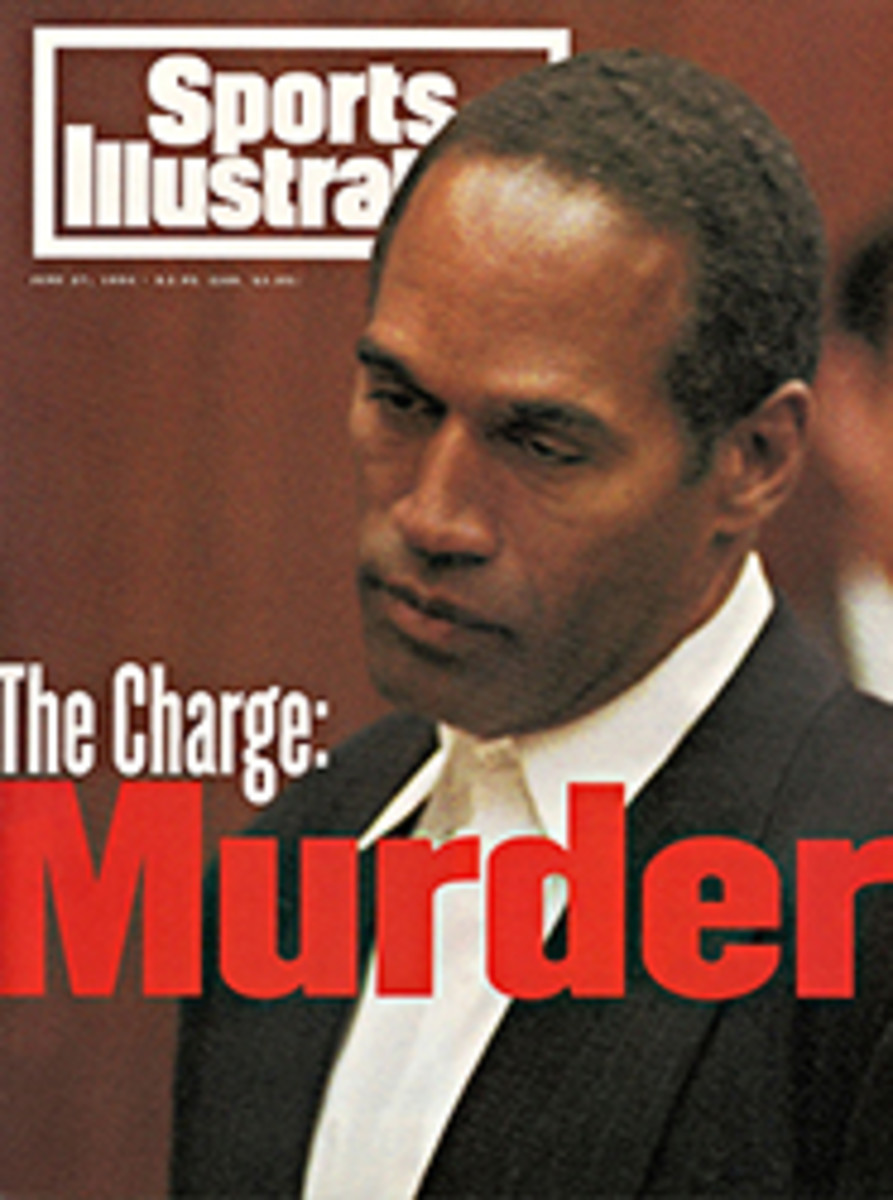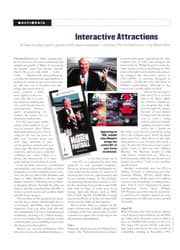
A Nearly Forgotten First
Seventy-Five years ago a chestnut colt named Sir Barton won three major stakes races—the Kentucky Derby, the Preakness and the Belmont—and was voted Horse of the Year. Yet by the time he died, in 1937, Sir Barton was not remembered as the first horse to win what came to be known as the Triple Crown. Most people recalled only that he had failed when he was finally confronted with a true champion: Man o' War.
Sir Barton was foaled in 1916 at John E. Madden's Hamburg Place farm, in Lexington, Ky. He was a diminutive colt with a small head and a crooked blaze. From his sire, Star Shoot, he inherited soft hooves that would trouble him throughout his career. But despite Sir Barton's sore feet—and despite the colt's disdain for people—Madden saw something he liked and decided to run the horse in his stable colors. Sir Barton was shipped to New York early in his 2-year-old season.
In his first career start, the Tremont Stakes for 2-year-olds at Aqueduct, Sir Barton led the field into the far turn but fizzled in the stretch to finish fifth. He didn't do much better that year in races at Saratoga, and Madden, frustrated by Sir Barton's apparent inability to sustain speed, began looking for buyers. He found one in John Kenneth Levison Ross, a retired commander in the Canadian navy and the heir to a railroad empire.
Ross paid $10,000 for Sir Barton and turned him over to trainer Guy Bedwell, whose first priority was to work on the colt's feet. Bedwell had a blacksmith insert piano felt between Sir Barton's shoes and his hooves to relieve the tenderness. During the early months of 1919, Sir Barton was used primarily as a workmate for Billy Kelly, the star of the Ross stable and an early favorite for the Kentucky Derby.
Watching the colts work together, Bedwell noticed that Billy Kelly was having trouble keeping up with Sir Barton. Bedwell and Ross discussed their Derby strategy and decided to enter Sir Barton as a rabbit for Billy Kelly. The plan was for Sir Barton to catapult to the lead and set a fast pace to kill off Billy Kelly's opposition, principally his archrival, Eternal. Johnny Loftus, a sullen, foul-mouthed rider but an acknowledged master of pace, was assigned to the maiden Sir Barton.
The Churchill Downs track on May 10, 1919, was listed as "heavy" from a night of rain. The horses left the post and passed the stands. According to the plan hatched by Bedwell and Ross, Sir Barton was supposed to fade at around the eighth pole. Instead, he opened up a five-length lead. He crossed the finish line with his ears pricked and with Loftus peering over his shoulder at the trailing field.
Handicappers pointed to the slow time (2:09[4/5]) and blamed the muddy track for both Billy Kelly's loss and Eternal's 10th-place finish. The Preakness, to be run in Baltimore only four days later, would reveal the true Sir Barton, the handicappers said.
At Pimlico, Bedwell and Ross entered another stablemate, Milkmaid, a high-strung filly. Her jockey was Earl Sande, who had ridden Billy Kelly in the Derby. In the Preakness, Sande was told to veer in at the start, break up the alignment of the field and allow Sir Barton time to get a good position. Loftus, meanwhile, was told to do what he did in the Derby: Get Sir Barton out front and keep him there. As it turned out. Sir Barton was never challenged. On a fast track he won by four lengths over Eternal in 1:53. (The Preakness was run at 1‚Öõ miles in 1919; it was not lengthened to 1[3/16], until 1925.)
Still, Sir Barton's Preakness victory failed to make believers out of everyone. The colt began to walk with a limp not long alter the race, mainly as a result of the stuffing in his shoes. In an effort to keep Sir Barton on edge, as well as to prove his soundness, Bedwell ran him in the Withers Stakes at Belmont on May 24. Loftus was told to rate Sir Barton just off the pace to see if his speed could be contained. While Eternal set fast fractions up front, Sir Barton lagged behind until the stretch; then he accelerated to win by three lengths.
The naysayers now joined Sir Barton's bandwagon. They sent him to the post 2½ weeks later in the Belmont Stakes (then run at 1‚Äö√Ñ√∂‚àö√±‚àö‚à´ miles) as the overwhelming 7-20 favorite. Only two horses showed up to challenge the champ, who took the lead in the stretch and drew off to win by five lengths in 2:17⅖ a new U.S. record.
By now Sir Barton had acquired an amusing swagger; his sore feel caused him to walk pigeon-toed. He had become nearly impossible to train, choosing to extend himself only in races. Bedwell tried to trick the colt into training by lining up other horses to run with him and make him think he was in a race. "To get him fit, you have to half-kill him with work—and a lot of other horses as well," Bedwell told Bert E. Collyer of the Chicago Evening Post.
By the end of 1919 Sir Barton had won eight of 13 races and was chosen Horse of the Year by the thoroughbred racing associations. Ross considered retiring his champion rather than subjecting him to the rigorous handicap schedule of 1920. But Bedwell convinced him that Sir Barton could handle the heavier schedule despite his physical problems.
Sir Barton had a lackluster spring but by late summer was among the leaders of the handicap division. By fall it was clear that only one colt could keep Sir Barton from repeating as Horse of the Year.
Man o' War had been defeated only once, as a 2-year-old in the Sanford Memorial, by a colt with the appropriate name of Upset. As a 3-year-old Man o' War won all 11 of his races, including the Preakness, the Withers, the Belmont, the Dwyer, the Potomac Handicap and the Jockey Club Gold Cup. (Man o' War was not entered in the 1920 Kentucky Derby; his owner, Samuel D. Riddle, thought the 1¼-mile race would be too taxing for a 3-year-old so early in the year.) It seemed only fitting that Man o' War and Sir Barton should meet to decide the Horse of the Year title. Riddle and Ross decided to run their champions in a match race at Kenilworth Park in Ontario on Oct. 12.
The Kenilworth Gold Cup, with a purse of $75,000 and a distance of 1¼ miles, was dubbed the Race of the Century by noted turf writer Joe Palmer. Man o' War was made the 5-100 favorite. "Man o' War will not so much run with Sir Barton as hurdle him," Palmer wrote. The two jockeys—Frank Keogh on Sir Barton and Clarence Kummer on Man o' War—were both told, Get up front and stay there.
When the flag dropped (the starting gate had yet to be invented; the horses simply lined up behind a ribbon), Sir Barton, on the rail, got the first jump. His lead was temporary. The only film ever taken of Sir Barton tells the story: Man o' War, with his long, effortless stride, kicked dust into Sir Barton's face, leaving the Triple Crown winner far behind in the stretch. Despite a broken stirrup, Man o' War won by seven lengths in a track-record 2:03. Sir Barton hobbled over the finish line, having lost all four shoes.
After the race many writers blasted Ross for running a horse with bad feet against the newly anointed Horse of the Century. Sir Barton never won another race and was retired to stud in Virginia, where he stood for 11 years. In 1933 he was turned over to the military in Nebraska, where his stud fee was reported to have been between $5 and $10. Later that year he was bought by Dr. J.R. Hylton of Douglas, Wyo., who retired the old champion to his ranch. Sir Barton died on Oct. 30, 1937, and was buried near his paddock.
In 1968, through a Jaycee-sponsored effort, Sir Barton was exhumed and his remains placed beneath a statue in Washington Park near Douglas. Alas, Sir Barton suffered one final indignity. The fiberglass statue that marks his grave is not a likeness of the first Triple Crown champion. It is a generic horse made by a Montana company that specializes in life-sized models of large animals.
PHOTO
CHURCHILL DOWNS INC./KINETIC CORT
Grumpy and gimpy, Sir Barton (at Churchill Downs with Loftus up) wasn't much for training.
Stephanie Diaz writes often on equine subjects for Sports Illustrated.

